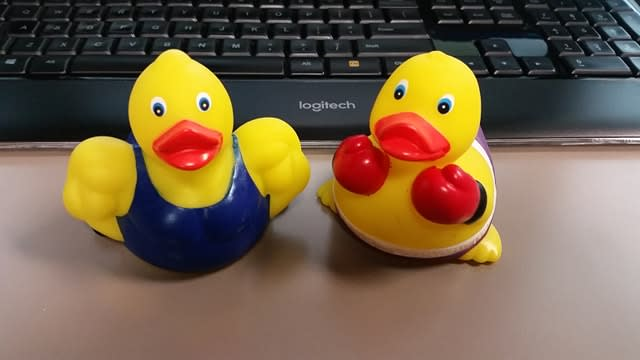
Have you ever wondered why programmers have rubber ducks? There’s actually a reason behind it. Rubber ducks are a great tool for debugging code.
They help programmers to visualize the code, find errors and fix them. In this article, we’ll discuss the benefits of using rubber ducks for debugging, and show you how to use them.
Why do programmers have rubber ducks?
When programmers get stuck on a problem, they sometimes turn to a rubber duck for help. Rubber ducks, or any other type of toy ducks, have been used for debugging for years.
The logic is simple: If you can explain the problem to the duck, then you can explain it to anyone. And once you’ve explained it to the duck, you’re one step closer to solving it.
Ducks make great debugging partners because they’re patient and non-judgmental. They also come in a variety of colors and styles, so you can find one that’s perfect for your programming needs.
What does rubber ducking mean?
Rubber ducking is a term used in programming to describe the act of explaining your code to someone (or something) else.
When you rubber duck, you take the time to verbalize your code and explain it in detail. Doing so can help you find problems with your code, as well as solutions.
Even better, having someone else there to listen can help you learn and understand your code better. Plus, it’s just plain fun!
How can I implement rubber duck debugging into my coding practices?
If you’re not familiar with the term, rubber duck debugging is a way of debugging code by talking through it aloud.
The theory is that by vocalizing your code, you’re more likely to find and correct errors. And it turns out, there’s some science behind this! A study from the University of Sheffield found that people who talked their way through code were able to find and correct errors 33% faster than those who didn’t.
So how can you start using rubber duck debugging in your own coding practices? The next time you’re stuck on a tough bug, take a break and try talking through your code out loud. You might be surprised at how much easier it is to find and fix errors when you’re explaining them to someone else!
What’s the psychology behind rubber ducking?
Rubber ducks have been used for debugging for decades. The theory is that, by vocalizing their issues out loud, programmers can think more clearly and find solutions more quickly. There’s even some science to back it up—talking out loud can help you process information better and come up with creative solutions.
Plus, it’s just plain fun to talk to your rubber duck, and that can help lighten the mood during a tough debugging session. So the next time you’re stuck on a problem, try talking it out with your rubber duck—you might be surprised at how helpful it can be!
Do I have to use a duck?
While it’s not mandatory to use a rubber duck when debugging, it can be a helpful tool. They’re often called “debug ducks” because of their usefulness in this process.
The idea is that when you see something going wrong in your code, you can say it out loud—in the company of your rubber duck—to help you find the source of the problem. It can be helpful to give your duck a name, too, so you can talk to it as if it’s another person.
Some programmers even give their ducks personalities, which can add an extra layer of amusement to the debugging process.
Rubber ducks are ubiquitous in the programmer’s world. You’ll find them perched on monitors, on desktops, and in many programmer’s pockets. But why do they have them? And more importantly, how can you use the same debugging technique in your own code?